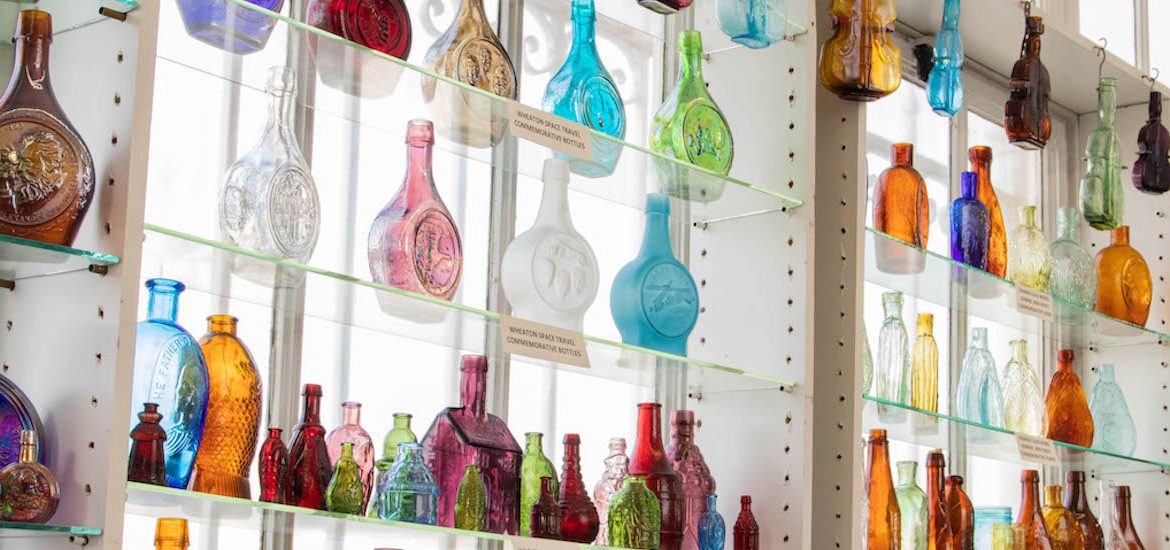

Ever wonder how Glassboro acquired its name? Wonder no further because I found out! The Heritage Glass Museum, located a few minutes from campus, preserves and displays antique glasswork made in Glassboro and surrounding South Jersey towns over the past 200 years. The best part – it’s free admission! The name of Glassboro and the statue in the Town Square finally make sense. I visited on a quiet Saturday afternoon and the extremely kind owner walked us around the exhibit explaining the history and progression of glassblowing – I promise it’s more interesting than you’d expect.
Solomon Stanger, a German immigrant, purchased 200 acres of land in 1779 for a “glassworks in the woods.” Stanger’s Harmony Glassworks, built in 1813, is today’s Heritage Glass Museum. After a couple of years of failed business, Thomas Heston and Thomas Carpenter bought the land. They’re recognized as the first glassworkers in New Jersey to produce clear aqua bottle glass. Heston and Carpenter increased business, contributing to the roots of South Jersey’s notable glass industry.
Heston’s grandsons acquired the business in 1838, renamed the business to Whitney Brothers Glassworks and ran “one of the most innovative, prosperous and best equipped glass industries in the nation” for 80 years. (Rowan’s Whitney Center is named after the Whitney Brothers.)
The business closed in the 1920s and after decades of random local organizations occupying the space, the Heritage Glass Museum was founded in 1979.
The owner recommends to check out Wheaton Arts in Millville, New Jersey. The non-profit organization invites artists and audiences to challenge their creativity. In the Glass Studio, attendees are able to watch glassmaking and tour the Museum of American Glass – definitely a must with warm weather approaching!
At the end of the tour, visitors are welcomed to purchase historic and affordable glass pieces. The museum is located on East High St., so parking is easily accessible if you don’t feel like walking the five minutes from campus. Since, the museum is free, I highly suggest checking out one of the restaurants on the block.

Like what you see? Come visit us!
Story and photography by: Alyssa Bauer, junior public relations major



